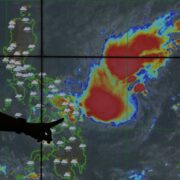Serious disaster messaging

There is always a time for everything, including when to make jokes. But in the middle of a storm is not one of those times. By this time, Interior Secretary Jonvic Remulla had learned a lesson, hopefully, to no longer announce class suspensions in a lighthearted manner.
But there’s still something to be said about his lack of formality expected of a government official issuing disaster-related information in a trivial manner. It was not only inappropriate and in poor taste, but also very tone-deaf given the widespread catastrophe brought about by a series of tropical cyclones and the southwest monsoon rains (“habagat”). The inclement weather would eventually affect 3.8 million people and leave at least 25 dead. Damage to infrastructure has been estimated at P3.98 billion, while damage to agriculture is at P366.9 million.
One can argue that Remulla was only being Filipino, using humor to cope with life’s challenges. However, it is one thing to be one of the storm victims making light of their situation—some call it resilience—and another thing to be a government official making a “joke” from a place of privilege. What’s worse is Remulla even doubled down on his messaging style saying, “A little humor never hurt anyone.”
Disasters are a matter of life and death, not a laughing matter even for the most uncaring of bureaucrats. Effective disaster messaging is crucial for public safety, protection of property, and organizing the appropriate response efforts during and after the disaster. It must also be delivered promptly to allow residents to plan an evacuation, or to spare students the inconvenience of going to school only to have classes suspended later.
Consequential damages
Perhaps this is also why the public does not take announcements seriously, because of the lack of sensitivity, consideration, and urgency on the part of some officials.
As disaster manuals emphasize, communication with the community becomes especially critical, as it includes alerts and warnings, directives about evacuations, and other self-protective actions. It must also be clear and credible in providing guidelines to its intended recipients.
A nonchalant school suspension announcement may not result in serious harm, but if authorities do not take disaster messaging seriously, it could lead to consequential damages that cost lives.
Take, for example, the poor disaster messaging during Supertyphoon “Yolanda” in November 2013. While the Philippine Atmospheric Geophysical and Astronomical Services Administration (Pagasa) issued adequate early warnings, there was one crucial element that changed the way communities received the message and reacted to it: the use of the term “storm surge.”
Pagasa describes a storm surge as “the abnormal rise in sea level that occurs during tropical cyclones or ‘bagyo’.
Serious shortcomings
As the tropical cyclone approaches the coast, strong winds push the ocean water over the low-lying coastal areas, which can lead to flooding and makes storm surges “very dangerous.”
Residents of coastal communities in Tacloban City, the hardest hit by Yolanda, however, did not understand what a storm surge was. This lack of understanding made them complacent, and despite having 18 hours to evacuate, many decided to stay put. The storm surge, estimated to be between 7.5 and 9.1 meters, equivalent to a two to three stories building, devastated the city and surrounding areas, with almost 6,000 dead in Tacloban alone, many of them from coastal areas. Pagasa, instead of using the unfamiliar term, could have used the more commonly-known terms such as “daluyong” or even tsunami.
Pagasa, in its post-Yolanda assessment, acknowledged that more could have been done to explain to the public the magnitude and gravity of storm surges. “This incident reveals serious shortcomings in the communication of the hazards of a storm to residents,” stated an analysis of early warning systems during Yolanda published in the International Journal of Disaster Reduction.
Cosmetic projects
This is why disaster messaging is crucial and should be taken seriously by the government, especially as “the climate has changed,” as President Marcos emphasized this week. “The things that we memorized before—when the typhoons will come, what their tracks are, where the areas that will be flooded—most of these things no longer apply. So our solutions need to be longer term, not so ad hoc,” he said.
The President also said Filipinos must change their mindsets about disaster preparedness and work toward adaptation. Before he could expect this from the public, however, Mr. Marcos must first demand that government officials take their tasks seriously, from going beyond cosmetic projects to addressing problems such as the perennial flooding and implementing credible and timely disaster communication,
Officials who believe that making light of challenging situations is already public service do not belong in government but in a circus. Filipinos deserve better.





















